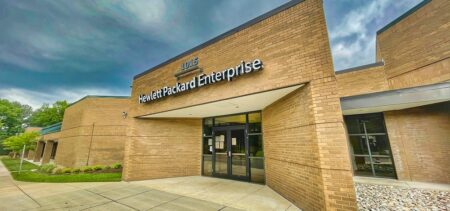This list comprises seven companies currently dominating the networking marketplace. Since the multitude of entities worth listing required a selection criteria, here are seven companies, which have only “A” (capital letter) names. Enjoy our A-list with interesting facts on the founding process, important moments and the company’s enterprise networking services:
- A10 networks, San Jose CA
A10 Networks is a public company (IPO: 21 March 2014) that originally targeted only the identity management market in networking, but moved on to producing software and hardware for application delivery controllers.
The company dates back to 20014, when Lee Chen, co-founder of Foundry Networks, initiated the procedures for this new company after being in various management positions at Apple Computer, Convergent Technologies and InSync Group. Presently Lee Chen is founder and CEO of A10, while Raj Jalan (also from Foundry) is CTO.
Among A10’s most renowned products are the A10 Thunder Series platforms, the AX series -both ADCs, as well as the EX series and ID series, related to network identity management.
- Akamai, Cambridge MA
Akamai qualifies as a public company specializing in content delivery network or CDN and also a cloud services provider; it was founded in 1998 by Daniel Lewin, at the time a PhD graduate MIT student. The Akamai founder died in the September 11 attacks.
During its MIT years, Lewin discovered innovative algorithms for optimizing Internet traffic, and these represented the basis for the Akamai Company.
One of the other co-founders, MIT Professor Tom Leighton, is currently the company’s CEO (since 2013, following Paul Sagan). Also a mathematician and a member of the American Mathematical Society, F. Thomson Leighton believes that web congestion can be solved via applied mathematics in algorithms.
The Akamai Intelligent Platform, composed out of 170 thousand servers worldwide, is their most well-known product. Monitoring networks in real-time the servers employ complex algorithms to process requests and deliver content. The Akamai network has been involved in a privacy policy dispute, related to its stored PIIs allegedly ending up in the NSA databases.
Among Akamai’s customers are the following: Apple, Microsoft, BBC iPlayer, the WhiteHouse.gov website, Adobe, Airbnb, ESPN, NASA, the Steam service, yahoo and others. Some of the company’s competitors are CDNetworks, CloudFlare, or Limelight Networks.
- Amazon, Seattle WA
The Amazon Web Services or AWS dates back to 2006 (officially), with a plethora of cloud computing services amalgamated around Amazon Elastic Compute Cloud (EC2) and Amazon Simple Storage Service (S3).
Ec2 started as internal infrastructure and the idea for it belongs to Chris Pinkham, the engineer in charge of the company’s infrastructure in the 2000s. In a quest for decentralization and lowering the cost of services to 30 percent or less, the project paper on a cloud-provisional server reached Bezos’s desk. Further on, the satellite development office from South Africa designed the EC2 service under the supervision of Pinkham.
Scaling the web services and finding the most suitable solutions drove the technological advancements at Amazon until they became cornerstone services for the company, surpassing by far their first task of improving the online bookstore operations.
AWS’s Q3 2015 revenue reached $2.1 billion, with a whopping 78% increase compared with the previous year.
- Apple, Cupertino CA
No point in mentioning the company’s history from its 1976 founding until the present years, nor the fact that this company is not your traditional enterprise networking company. Nevertheless, considering its exclusive services and the way its products are present in enterprise work environments, Apple has its distinct place in this top.
The tech giant included in its operating system features for corporate users and enterprise IT departments “improving enterprise feature sets”.
Their iCloud services debuted in 2011 and serves as a data-syncing center for all mobile operations, allowing the storage of various file types and providing a platform for messaging and workflow functions. The formerly announced iWork suite later became the Productivity Apps suite, comprising Pages, Numbers and Keynote, constantly updated by the Apple developers.
- Arista, Santa Clara CA
Andy Bechtolsheim, David Cheriton and Kenneth Duda founded this Santa Clara networking company in 2004. First the name was Arastra; also, the same trio had previously founded a startup, Kealia, while Bechtolsheim and Cheriton had been co-founders of Granite Systems.
Arista designs and sells multilayer network switches to deliver software-defined networking (SDN) solutions for large data-centers, cloud computing, high-performance computing and high frequency trading environments. Arista competes with Cisco on the high-end data center infrastructure market, while continuing its more limited deployments in parallel.
Its network products are available worldwide and its platforms have won awards for their scalability, agility and resilience features. More than five million cloud-networking ports worldwide belong to this producer, as its webpage proudly states .
Arista’s core product is its Extensible Operating System (EOS™), endowed with a modern architecture that allows in-service upgrades and application extensibility. This single network operating systems runs on all the company’s devices and stands out on account of its software fault containment feature and stateful restart feature. This two properties translate into the ability of limiting any occurring damage to a single agent and picking up the agent activity where it left off after restart.
- AT&T, Dallas TX
AT&T is another giant of networking, besides being the second largest provider (carrier) of mobile telephone and the first largest company in fixed telephony. Founded in 1983 as a divestiture of the former AT&T, the company was first one of the seven Regional Bell Operating Companies (RBOC’s) – the Southwestern Bell Corporation, since the 1982 antitrust lawsuit pressured the 1885 American Telephone and Telegraph Company into changes.
In 2005 the Southwestern Bell Corporation itself acquired AT&T and adopted the name, keeping the original 1885 AT&T as its long distance phone subsidiary. The merger value was of $16 billion.
The At&T network vision involves three components: transmission, switching and management. Keeping the evolutionary pace in what hardware and software are concerned, the company continued its monolith status. For example, following a long series of acquisitions, mergers and agreements, AT&T Mobility is the second largest digital voice and data network within its United States footprint.
In addition, the company also pioneered in 4G LTE technology with an offer for wireless connected devices and is now road-mapping its 5G network for 2016.
- Avaya, Santa Clara CA
The last enterprise networking company from our “capital letter A” list (inspired by this NetworkWorld top) is Avaya.
This multinational tech company is also located in Santa Clara, and it was formerly a subsidiary of AT&T (1995) and further part of Lucent Technologies. In 2000 Avaya became an independent company. Although public at the beginning, in 2007 Avaya went private, being acquired by TPG Capital and Silver Lake Partner.
Currently the company provides enabling, optimization and innovation services as part of its professional services suite. Avaya also offers Private Cloud and Support services and it started to deploy a three-year network expansion plan.
Some of their available enterprise solutions are Avaya Aura, destined for mid-sized companies, Avaya Global Support Services or the SDN arsenal related products (e.g. the Open Networking Adapter or ONA).























